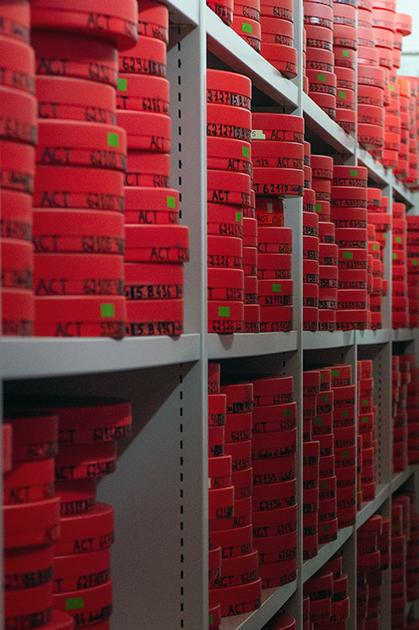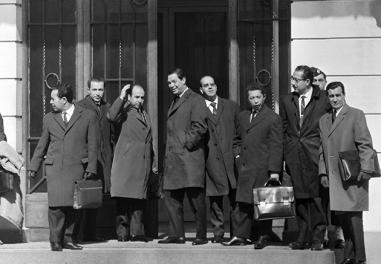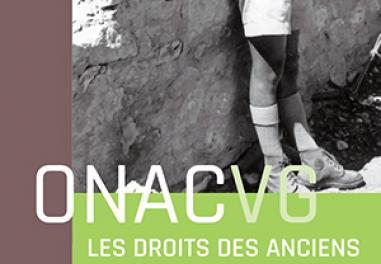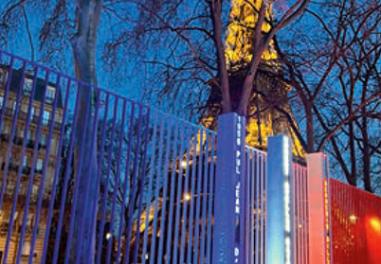Algeria in the ECPAD archives
The Établissement de Communication et de Production Audiovisuelle de la Défense (ECPAD) preserves a visual record of French involvement in the Algerian War. Films and photographs present the events of 1962 and the gradual end to the conflict.

195 000 photographs and 1 220 film titles! The “Algeria” archive of the Service Cinématographique des Armées (SCA), successor to the Section Cinématographique de l’Armée and the Section Photographique de l’Armée, is a genuine treasure trove,
The SCA’s role in Algeria
The importance of this archive has to do with the role of the SCA itself, one of its main jobs being to contribute to informing and instructing, through film and photography, the military personnel of the Ministry of the Armed Forces. Production for Le Bled, for instance, a military newspaper distributed to members of the contingent serving in Algeria until May 1962, amounted to some 58 000 photographs.
It also has to do with the size of the private archives held by the ECPAD, comprising over 50 000 photographs and some 20 films.
Finally, it has to do with its history: installed in Algeria since 1942, the SCA was the only institutional body authorised to produce documents about the territory, and it gradually developed into a veritable production centre, increasing its staff considerably with the outbreak of the Algerian War in 1954. Its main office, in Algiers, was supported by two secondary sites in Oran and Constantine and, in 1956, the staff and equipment of the SCA’s Germany section were also posted to Algeria.
Between 1954 and 1964, several dozen photographers and cameramen covered both military “pacification” operations and scenes from the daily lives of the civilian population, whether indigenous or of European origin, and brought back tens of thousands of photographs and some 1 200 films.
1962 in pictures
In 1962 alone, the Algerian office of the Établissement Cinématographique des Armées (ECA) – as it had been officially called since 1961, though it continued to be known as the “SCA” – produced 339 photo stories, comprising 9 211 photos, and 53 films, through the lenses of 12 photographers and seven cameramen. This represented a 50% drop compared to previous years, as the country’s independence signalled the progressive departure of French troops and, as a result, the end of photographic and cinematographic reporting.
In 1962, these pictures continue to show the day-to-day routine of the garrison and the daily lives of the troops. They also cover the often violent events that took place in the run-up to independence, before and after the signing of the Évian Accords. For instance, the acts of violence committed by the Secret Army Organisation (OAS) are a theme that stands out from the usual coverage: portraying searches of people and homes, roadblocks and the cordoning off of neighbourhoods to prevent harm from OAS members, the reports are a record of the damage caused by the attacks on Algerian cities (Algiers, ref. ALG 62-55, ALG 62-78; Oran, ref. ALG 62-77, ALG 62-82) and present the army enforcing the ceasefire of 19 March. There are also archive films of direct armed clashes between the French Army and the OAS in the Algiers neighbourhood of Bab-el-Oued on 23 March (ref. ACT 6242, ACT 6246). The reports show the violence of the clashes and the physical and material damage caused – like the footage of the bodies of the victims of the Rue d’Isly massacre in Algiers on 26 March 1962 (ref. ALG 62-60 R4) – and seek to record, in images, the need for the army to restore order and enforce the Évian Accords in order to end the conflict.
Another key theme of 1962 found in a number of the service’s reports is Algerian independence and the joyous demonstrations by nationalist sympathisers among the Muslim population, in early July 1962 in towns and cities across the country.
An institutional service
Meanwhile, sensitive issues like the mass repatriation of Algerian Europeans and a small proportion of harkis, forced to leave the country, are almost entirely absent from military photographic and audiovisual production. A single report follows the departure of families of harkis from a temporary camp in Bône in November 1962 (ref. ALG 62-162). The small number of images showing the distress of these sectors of the population points to the fact that the State’s inaction and inability to protect them were not regarded as subjects that could be approved by the authorities at that time. The absence – and, conversely, the existence – of certain subjects relating to Algerian independence and the year 1962 reminds us that the SCA was a producer of commissioned audiovisual content which, in particular with Charles de Gaulle’s return to power in 1958, lost its autonomy and followed State guidelines on communication and propaganda. Only the government’s viewpoint is represented, showing a shift over the course of the conflict, through to 1962, from the promotion of French Algeria to the recognition of the country’s right to self-determination, then independence.
Illustrating France’s post-war presence
Signés en mars 1962, les accords d’Évian prévoient un retrait de la quasi-totalité des forces militaires françaises dans un délai de deux ans après l’indépendance. Si le dernier reportage de la collection "Algérie" (ref. ALG) est ainsi logiquement réalisé en juin 1964, la production audiovisuelle de la section Algérie du SCA ne s’arrête toutefois pas complètement, la France ayant négocié, lors des accords d’Évian, le maintien d’une base militaire à Mers-el-Kebir et l’utilisation de centres d’expérimentations nucléaires dans le Sahara pour une durée de cinq ans. Quelques prises de vues rendent également compte de la présence d’un détachement de l’armée française sur la base de Bou Sfer, entre 1964 à 1971, afin d’assurer la sécurité des communications françaises en Méditerranée.
Read more
To mark the 60th anniversary of the end of the Algerian War, ECPAD and Siècle Productions co-produced the documentary series C’était la guerre d’Algérie, co-written by Georges-Marc Benamou and Benjamin Stora, with support from the Ministry of the Armed Forces. From the colonisation of Algeria in 1830 to the Évian Accords, in five episodes the documentary charts the course of the conflict, shedding light on its national and international importance. Broadcast on 14 and 15 March 2022 on France 2, the episodes are available to watch on france.tv until 12 July
Articles of the review
-
The file

1962: the end of the war in Algeria
On 18 March 1962, in Évian-les-Bains, the French Government and its Algerian counterparts signed an agreement that paved the way for Algerian independence, heralding the end of 132 years of colonisation and a war that had begun in 1954. It did not lead to the immediate cessation of violence and clas...Read more -
The figure

The National Office for Veterans and Victims of War
The National Office for Veterans and Victims of War (ONAC-VG) is an executive agency of the Ministry of the Armed Forces that guarantees the nation’s recognition of those who have served it. Today it is the “one-stop shop” for harkis and their families, who it supports in their applications. ...Read more -
The interview

Remembering the Algerian War
The Memorial to the Algerian War and the fighting in Morocco and Tunisia is a Major National Remembrance Site of the Ministry of the Armed Forces. The man behind it, Gérard Collin-Thiébaut, and the staff of the National Office for Veterans and Victims of War (ONAC-VG) talk about the meaning and util...Read more

